#api based integration
Text
API for payments | Api360
API is the acronym for Application Programming Interface, which is a software intermediary that allows two applications to talk to each other. For an instance, when you use the apps like Facebook and send an instant message or check the weather on your phone, you are using API. API 360 is the perfect solution for fast-growing brands that need to moniker their business-critical internet assets. These API development services are flexible and scalable platforms that can be tailored to the specific needs of any organization. So, if you’re looking for a comprehensive solution for monitoring your digital assets, then it is your perfect solution. You can use this API for payments and finance-related stuff or banks and insurance, SME start-ups and scaleups, and online entrepreneurs.
How Does API Work?
The API is embedded in a device or a system and it defines how other devices or systems can talk to it. The APIs communicate by passing back and forth e JSON documents. For example, whatever you read online, is brought up to you by the medium web server that includes API. The
payment gateway for API development
is the easiest payment transaction service. It is a kind of API that enables e-commerce businesses to seamlessly manage payments. Payment APIs have the power to optimize the payment process for both businesses and shoppers, as it makes the transaction faster and safer. This payment API service provides many benefits, such as it provides a frictionless, check-out experience and offers a wide range of payment options, reaches to customers in a new market without having to forge banking relationships, it prevents data entry errors that reduce the transaction risk and improving security, it also reduces the risk of fraud with robust payments authentication features, it accesses the real-time data on the status of transaction with other necessary details, etc.
#API Development#api development services#API for Payments#api development company#Outsource API Development Services#api based integration#Payment Gateway API Development#api integration companies#api and web services#api gateway products#api business#security api#api security best practices#api as a service business model
1 note
·
View note
Text
Bryon Jacob, CTO & Co-Founder of data.world – Interview Series
New Post has been published on https://thedigitalinsider.com/bryon-jacob-cto-co-founder-of-data-world-interview-series/
Bryon Jacob, CTO & Co-Founder of data.world – Interview Series
Bryon Jacob is the CTO and co-founder of data.world – on a mission to build the world’s most meaningful, collaborative, and abundant data resource. Prior to data.world, he spent ten years in roles of increasing responsibility at HomeAway.com, culminating in a VP of Tech / Technical fellow role. Bryon has also previously worked at Amazon, and is a long-time mentor at Capital Factory. He has a BS/MS in computer science from Case Western University.
What initially attracted you to computer science?
I’ve been hooked on coding since I got my hands on a Commodore 64 at age 10. I started with BASIC and quickly moved on to assembly language. For me, computer science is like solving a series of intricate puzzles with the added thrill of automation. It’s this problem-solving aspect that has always kept me engaged and excited.
Can you share the genesis story behind data.world?
data.world was born from a series of brainstorming sessions among our founding team. Brett, our CEO, reached out to Jon and Matt, both of whom he had worked with before. They began meeting to toss around ideas, and Jon brought a few of those concepts to me for a tech evaluation. Although those ideas didn’t pan out, they sparked discussions that aligned closely with my own work. Through these conversations, we hit upon the idea that eventually became data.world. Our shared history and mutual respect allowed us to quickly build a great team, bringing in the best people we’d worked with in the past, and to lay a solid foundation for innovation.
What inspired data.world to develop the AI Context Engine, and what specific challenges does it address for businesses?
From the beginning, we knew a Knowledge Graph (KG) would be critical for advancing AI capabilities. With the rise of generative AI, our customers wanted AI solutions that could interact with their data conversationally. A significant challenge in AI applications today is explainability. If you can’t show your work, the answers are less trustworthy. Our KG architecture grounds every response in verifiable facts, providing clear, traceable explanations. This enhances transparency and reliability, enabling businesses to make informed decisions with confidence.
How does the knowledge graph architecture of the AI Context Engine enhance the accuracy and explainability of LLMs compared to SQL databases alone?
In our groundbreaking paper, we demonstrated a threefold improvement in accuracy using Knowledge Graphs (KGs) over traditional relational databases. KGs use semantics to represent data as real-world entities and relationships, making them more accurate than SQL databases, which focus on tables and columns. For explainability, KGs allow us to link answers back to term definitions, data sources, and metrics, providing a verifiable trail that enhances trust and usability.
Can you share some examples of how the AI Context Engine has transformed data interactions and decision-making within enterprises?
The AI Context Engine is designed as an API that integrates seamlessly with customers’ existing AI applications, be they custom GPTs, co-pilots, or bespoke solutions built with LangChain. This means users don’t need to switch to a new interface – instead, we bring the AI Context Engine to them. This integration enhances user adoption and satisfaction, driving better decision-making and more efficient data interactions by embedding powerful AI capabilities directly into existing workflows.
In what ways does the AI Context Engine provide transparency and traceability in AI decision-making to meet regulatory and governance requirements?
The AI Context Engine ties into our Knowledge Graph and data catalog, leveraging capabilities around lineage and governance. Our platform tracks data lineage, offering full traceability of data and transformations. AI-generated answers are connected back to their data sources, providing a clear trace of how each piece of information was derived. This transparency is crucial for regulatory and governance compliance, ensuring every AI decision can be audited and verified.
What role do you see knowledge graphs playing in the broader landscape of AI and data management in the coming years?
Knowledge Graphs (KGs) are becoming increasingly important with the rise of generative AI. By formalizing facts into a graph structure, KGs provide a stronger foundation for AI, enhancing both accuracy and explainability. We’re seeing a shift from standard Retrieval Augmented Generation (RAG) architectures, which rely on unstructured data, to Graph RAG models. These models convert unstructured content into KGs first, leading to significant improvements in recall and accuracy. KGs are set to play a pivotal role in driving AI innovations and effectiveness.
What future enhancements can we expect for the AI Context Engine to further improve its capabilities and user experience?
The AI Context Engine improves with use, as context flows back into the data catalog, making it smarter over time. From a product standpoint, we’re focusing on developing agents that perform advanced knowledge engineering tasks, turning raw content into richer ontologies and knowledge bases. We continuously learn from patterns that work and quickly integrate those insights, providing users with a powerful, intuitive tool for managing and leveraging their data.
How is data.world investing in research and development to stay at the forefront of AI and data integration technologies?
R&D on the AI Context Engine is our single biggest investment area. We’re committed to staying at the bleeding edge of what’s possible in AI and data integration. Our team, experts in both symbolic AI and machine learning, drives this commitment. The robust foundation we’ve built at data.world enables us to move quickly and push technological boundaries, ensuring we consistently deliver cutting-edge capabilities to our customers.
What is your long-term vision for the future of AI and data integration, and how do you see data.world contributing to this evolution?
My vision for the future of AI and data integration has always been to move beyond simply making it easier for users to query their data. Instead, we aim to eliminate the need for users to query their data altogether. Our vision has consistently been to seamlessly integrate an organization’s data with its knowledge—encompassing metadata about data systems and logical models of real-world entities.
By achieving this integration in a machine-readable knowledge graph, AI systems can truly fulfill the promise of natural language interactions with data. With the rapid advancements in generative AI over the past two years and our efforts to integrate it with enterprise knowledge graphs, this future is becoming a reality today. At data.world, we are at the forefront of this evolution, driving the transformation that allows AI to deliver unprecedented value through intuitive and intelligent data interactions.
Thank you for the great interview, readers who wish to learn more should visit data.world.
#agents#ai#AI systems#Amazon#amp#API#applications#architecture#automation#bases#bleeding#Born#CEO#challenge#coding#collaborative#columns#compliance#computer#Computer Science#content#CTO#cutting#data#Data Integration#Data Management#data.world#databases#development#driving
0 notes
Text
Looking to elevate your web projects with ReactJS expertise? Our team of seasoned ReactJS developers is primed to deliver exceptional results. With a profound grasp of React's component-based architecture and state management, we craft dynamic, high-performance web applications that engage users. Whether it's creating interactive interfaces, building scalable frontends, or integrating React with existing systems, our developers excel at every stage of development. Committed to client satisfaction and delivering on time, we ensure your project's success. Contact us today at ☎ +1 9177322215 to discuss your needs and let us bring your vision to life. Don't miss out on the opportunity to collaborate with skilled ReactJS professionals dedicated to your success.
#ReactJS expertise#Frontend development#Component-based architecture#Virtual DOM#JSX (JavaScript XML)#State management (e.g.#Redux#MobX)#React Hooks#React Router#Context API#Single Page Applications (SPAs)#Responsive design#Cross-browser compatibility#Testing (e.g.#Jest#Enzyme)#RESTful API integration#GraphQL integration#Flux architecture#Performance optimization#Material-UI#Ant Design#Semantic UI React#Server-side rendering (SSR)#Next.js#Gatsby.js
0 notes
Text
How Identity Verification APIs Enhance Safety and Contribute To a Safer Digital World
How do identity verification APIs enhance safety? The world is increasingly becoming digitized, bringing its own share of good and bad. From communicating with friends and family on social media to banking, shopping and working online, many daily activities now occur virtually.
While this connectivity has opened many doors, it has also created new risks to users’ security, privacy, and…

View On WordPress
#API-based identity validation#Authentication API services#Digital identity authentication#Enhanced security through API verification#Identity fraud prevention measures#Identity verification APIs#Identity verification technology#Safety-enhancing verification tools#Safety-focused API integration#Secure identity verification solutions
0 notes
Text

"Elevating Banking with Seamless API Integration"
Banking API Integration is the Seamlessly integrate APIs for efficient operations, exceptional customer experiences, and innovative financial services, propelling the industry to new heights.
#bank api integration#open api banking#api banking platform#api platform in banking#open banking api platform#api based banking#best open banking apis
0 notes
Text
Banking API Integration Platform | Call Now - Bankcloud
Bankcloud bank API allows you to integrate with multiple banks with a single integration Do instant disbursements, supports instant payouts, reconciliations, and balance checks etc
#bank api integration#open api banking#api banking platform#api platform in banking#open banking api platform#api based banking#best open banking apis
0 notes
Note
Hi! I’m a student currently learning computer science in college and would love it if you had any advice for a cool personal project to do? Thanks!
Personal Project Ideas

Hiya!! 💕
It's so cool that you're a computer science student, and with that, you have plenty of options for personal projects that can help with learning more from what they teach you at college. I don't have any experience being a university student however 😅
Someone asked me a very similar question before because I shared my projects list and they asked how I come up with project ideas - maybe this can inspire you too, here's the link to the post [LINK]
However, I'll be happy to share some ideas with you right now. Just a heads up: you can alter the projects to your own specific interests or goals in mind. Though it's a personal project meaning not an assignment from school, you can always personalise it to yourself as well! Also, I don't know the level you are, e.g. beginner or you're pretty confident in programming, if the project sounds hard, try to simplify it down - no need to go overboard!!

But here is the list I came up with (some are from my own list):
Personal Finance Tracker
A web app that tracks personal finances by integrating with bank APIs. You can use Python with Flask for the backend and React for the frontend. I think this would be great for learning how to work with APIs and how to build web applications 🏦
Online Food Ordering System
A web app that allows users to order food from a restaurant's menu. You can use PHP with Laravel for the backend and Vue.js for the frontend. This helps you learn how to work with databases (a key skill I believe) and how to build interactive user interfaces 🙌🏾
Movie Recommendation System
I see a lot of developers make this on Twitter and YouTube. It's a machine-learning project that recommends movies to users based on their past viewing habits. You can use Python with Pandas, Scikit-learn, and TensorFlow for the machine learning algorithms. Obviously, this helps you learn about how to build machine-learning models, and how to use libraries for data manipulation and analysis 📊
Image Recognition App
This is more geared towards app development if you're interested! It's an Android app that uses image recognition to identify objects in a photo. You can use Java or Kotlin for the Android development and TensorFlow for machine learning algorithms. Learning how to work with image recognition and how to build mobile applications - which is super cool 👀
Social Media Platform
(I really want to attempt this one soon) A web app that allows users to post, share, and interact with each other's content. Come up with a cool name for it! You can use Ruby on Rails for the backend and React for the frontend. This project would be great for learning how to build full-stack web applications (a plus cause that's a trend that companies are looking for in developers) and how to work with user authentication and authorization (another plus)! 🎭
Text-Based Adventure Game
If you're interested in game developments, you could make a simple game where users make choices and navigate through a story by typing text commands. You can use Python for the game logic and a library like Pygame for the graphics. This project would be great for learning how to build games and how to work with input/output. 🎮
Weather App
Pretty simple project - I did this for my apprenticeship and coding night classes! It's a web app that displays weather information for a user's location. You can use Node.js with Express for the backend and React for the frontend. Working with APIs again, how to handle asynchronous programming, and how to build responsive user interfaces! 🌈
Online Quiz Game
A web app that allows users to take quizzes and compete with other players. You could personalise it to a module you're studying right now - making a whole quiz application for it will definitely help you study! You can use PHP with Laravel for the backend and Vue.js for the frontend. You get to work with databases, build real-time applications, and maybe work with user authentication. 🧮
Chatbot
(My favourite, I'm currently planning for this one!) A chatbot that can answer user questions and provide information. You can use Python with Flask for the backend and a natural language processing library like NLTK for the chatbot logic. If you want to mauke it more beginner friendly, you could use HTML, CSS and JavaScript and have hard-coded answers set, maybe use a bunch of APIs for the answers etc! This project would be great because you get to learn how to build chatbots, and how to work with natural language processing - if you go that far! 🤖

Another place I get inspiration for more web frontend dev projects is on Behance and Pinterest - on Pinterest search for like "Web design" or "[Specific project] web design e.g. shopping web design" and I get inspiration from a bunch of pins I put together! Maybe try that out!
I hope this helps and good luck with your project!

#my asks#resources#programming#coding#studying#codeblr#progblr#studyblr#comp sci#computer science#projects ideas#coding projects#coding study#cs studyblr#cs academia
173 notes
·
View notes
Note
dream actually wanting to use AI for good AND release his creation for free and have anybody be able to tweak it? a slay of epic proportions
Open source in tech advancements is so much better than gatekeeping for profit, its how we make things better. The person who could add the next step and the next might never have had access if they'd kept it to themselves
Also, game modding, a bit like fanwork communities, is based on transforming the medium you love into new content and offering it to your community for free to enjoy and I love that.
This mod is so exciting because like, imagine a world wherein this technology is universally available in all games, or heck in all communication methods. Imagine the AI gets really good with all those specific words and phrases, it breaks down barriers.
I'm not saying a Minecraft mod is changing the world, it's being run off an existing API so they didn't develop the tech more than just integrate it into the game, but if this is successful I could see a world where a full game gets released with this tech in it natively and its going to be beautiful
91 notes
·
View notes
Text
It really is incredible how quickly the world of freely-accessible social media is dwindling— either falling apart internally or squeezed under the weight of tech monopolies. Or both.
Tumblr’s decision to remove nsfw posts to avoid strikes from Apple’s app store was what tossed the snowball down the mountain. Its demise was connected to internal mismanagement and the need to compete with other huge social media sites at the time they banned nsfw, which are all now under new management and/or owned by massive tech corporations.
That in particular is a point I would like everyone to think about. Every major social media site that we use is part of a larger billion-dollar corporation. Many of them started humbly— Facebook, Twitter, Tumblr, and Reddit were all created by average people. It goes without saying now that Facebook has become a monopoly itself, and we all know the shitstorm twitter is under, which has left us with two primary platforms for free social media: Tumblr and Reddit. We know what is happening to Tumblr, but what of Reddit?
Reddit is owned by Advanced Publications, who also own or have majority shares in companies like Charter Communications (the company behind Spectrum internet, as well as Vogue and The New Yorker) and Warner Bros. Discovery. With funding like that, obviously the intention is not to make Reddit a place of information and socialization— the real intent is to turn it into a money-making machine.
To ensure this, Reddit is in talks of making their company public, meaning they would have to answer to shareholders when making decisions for the website. Shareholders want to see continuous profit, and that cannot be done only through ad revenue, such that Reddit has primarily profited from for years. People can subscribe to Reddit to remove the ads, but subscription services alone don’t see the profits they want to make. The solution to this problem is to push Reddit competitors out.
Some of their biggest competitors, ironically, were their own userbase. Reddit has a slurry of third-party applications made by Reddit users themselves, using Reddit’s API which until recently has been free. Third-party apps such as Apollo gave users a way to use Reddit WITHOUT advertisements, which was lost revenue for Reddit all while using the site’s base code. As a result, this year (2023) Reddit began charging to use its API, resulting in all of these third-party apps shutting down. With no more internal competitors, it’s time to go public and see how much can be made by shareholders— they might even decide to use their new funds to buy out more social media sites, or further integrate failing ones into their system, just as they are with Snapchat.
All this talk about Reddit in a post that is supposed to be about Tumblr. But, the two are related. As Tumblr begins to fall into disrepair and demoderation, we will begin to witness the fall of free social media as we know it. Big tech has dug its fingers in what has quickly become an important piece to our social fabric. The platforms that give us news, connect us with friends and family, connects us to the world, and spreads information is in the hands of just a few tech companies. Tumblr is failing because Yahoo! is failing. Tumblr is failing because WordPress is failing.
It is incredibly easy to blame staff for their stupid decisions, and it should still be mentioned. However, my main concern is the accessibility to free social media itself. The fall of Tumblr is an example of a social media website whose poor decisions— namely the removal of nsfw posts, poor automated moderation and failures to adjust to an aging userbase— cost it everything, but what really resulted in its demise was competition. Tumblr could never compete with giants like Facebook or TikTok. Nowadays, the only site Tumblr could really compete with was Twitter, which will be under a subscription service come January. And as people flock to sites like BlueSky and Threads, the diversity of the online world will only continue to decline. It is exactly the lack of competition that will make it hard for any Tumblr-like to take off, especially since a site like this has always run on user participation, not profit.
My point is, look at the overarching bullshit that is taking away from online life and question whether it’s worth participating in. Find ways to protest online monopolies that are squeezing out competitor sites and making it harder for people to use social media, especially if they aren’t influencers. And take a step back from the staff drama to look at what hostile monopolies and an undemocratic internet is doing to communities like ours.
20 notes
·
View notes
Text
The open internet once seemed inevitable. Now, as global economic woes mount and interest rates climb, the dream of the 2000s feels like it’s on its last legs. After abruptly blocking access to unregistered users at the end of last month, Elon Musk announced unprecedented caps on the number of tweets—600 for those of us who aren’t paying $8 a month—that users can read per day on Twitter. The move follows the platform’s controversial choice to restrict third-party clients back in January.
This wasn’t a standalone event. Reddit announced in April that it would begin charging third-party developers for API calls this month. The Reddit client Apollo would have to pay more than $20 million a year under new pricing, so it closed down, triggering thousands of subreddits to go dark in protest against Reddit’s new policy. The company went ahead with its plan anyway.
Leaders at both companies have blamed this new restrictiveness on AI companies unfairly benefitting from open access to data. Musk has said that Twitter needs rate limits because AI companies are scraping its data to train large language models. Reddit CEO Steve Huffman has cited similar reasons for the company’s decision to lock down its API ahead of a potential IPO this year.
These statements mark a major shift in the rhetoric and business calculus of Silicon Valley. AI serves as a convenient boogeyman, but it is a distraction from a more fundamental pivot in thinking. Whereas open data and protocols were once seen as the critical cornerstone of successful internet business, technology leaders now see these features as a threat to the continued profitability of their platforms.
It wasn’t always this way. The heady days of Web 2.0 were characterized by a celebration of the web as a channel through which data was abundant and widely available. Making data open through an API or some other means was considered a key way to increase a company’s value. Doing so could also help platforms flourish as developers integrated the data into their own apps, users enriched datasets with their own contributions, and fans shared products widely across the web. The rapid success of sites like Google Maps—which made expensive geospatial data widely available to the public for the first time—heralded an era where companies could profit through free, mass dissemination of information.
“Information Wants To Be Free” became a rallying cry. Publisher Tim O’Reilly would champion the idea that business success in Web 2.0 depended on companies “disagreeing with the consensus” and making data widely accessible rather than keeping it private. Kevin Kelly marveled in WIRED in 2005 that “when a company opens its databases to users … [t]he corporation’s data becomes part of the commons and an invitation to participate. People who take advantage of these capabilities are no longer customers; they’re the company’s developers, vendors, skunk works, and fan base.” Investors also perceived the opportunity to generate vast wealth. Google was “most certainly the standard bearer for Web 2.0,” and its wildly profitable model of monetizing free, open data was deeply influential to a whole generation of entrepreneurs and venture capitalists.
Of course, the ideology of Web 2.0 would not have evolved the way it did were it not for the highly unusual macroeconomic conditions of the 2000s and early 2010s. Thanks to historically low interest rates, spending money on speculative ventures was uniquely possible. Financial institutions had the flexibility on their balance sheets to embrace the idea that the internet reversed the normal laws of commercial gravity: It was possible for a company to give away its most valuable data and still get rich quick. In short, a zero interest-rate policy, or ZIRP, subsidized investor risk-taking on the promise that open data would become the fundamental paradigm of many Google-scale companies, not just a handful.
Web 2.0 ideologies normalized much of what we think of as foundational to the web today. User tagging and sharing features, freely syndicated and embeddable links to content, and an ecosystem of third-party apps all have their roots in the commitments made to build an open web. Indeed, one of the reasons that the recent maneuvers of Musk and Huffman seem so shocking is that we have come to expect data will be widely and freely available, and that platforms will be willing to support people that build on it.
But the marriage between the commercial interests of technology companies and the participatory web has always been one of convenience. The global campaign by central banks to curtail inflation through aggressive interest rate hikes changes the fundamental economics of technology. Rather than facing a landscape of investors willing to buy into a hazy dream of the open web, leaders like Musk and Huffman now confront a world where clear returns need to be seen today if not yesterday.
This presages major changes ahead for the design of the internet and the rights of users. Twitter and Reddit are pioneering an approach to platform management (or mismanagement) that will likely spread elsewhere across the web. It will become increasingly difficult to access content without logging in, verifying an identity, or paying a toll. User data will become less exportable and less shareable, and there will be increasingly fewer expectations that it will be preserved. Third-parties that have relied on the free flow of data online—from app-makers to journalists—will find APIs ever more expensive to access and scraping harder than ever before.
We should not let the open web die a quiet death. No doubt much of the foundational rhetoric of Web 2.0 is cringeworthy in the harsh light of 2023. But it is important to remember that the core project of building a participatory web where data can be shared, improved, critiqued, remixed, and widely disseminated by anyone is still genuinely worthwhile.
The way the global economic landscape is shifting right now creates short-sighted incentives toward closure. In response, the open web ought to be enshrined as a matter of law. New regulations that secure rights around the portability of user data, protect the continued accessibility of crucial APIs to third parties, and clarify the long-ambiguous rules surrounding scraping would all help ensure that the promise of a free, dynamic, competitive internet can be preserved in the coming decade.
For too long, advocates for the open web have implicitly relied on naive beliefs that the network is inherently open, or that web companies would serve as unshakable defenders of their stated values. The opening innings of the post-ZIRP world show how broader economic conditions have actually played the larger role in architecting how the internet looks and feels to this point. Believers in a participatory internet need to reach for stronger tools to mitigate the effects of these deep economic shifts, ensuring that openness can continue to be embedded into the spaces that we inhabit online.
WIRED Opinion publishes articles by outside contributors representing a wide range of viewpoints. Read more opinions here. Submit an op-ed at [email protected].
19 notes
·
View notes
Text
React JS
Component-Based Architecture:
React applications are built using components, which are reusable, self-contained pieces of the UI. Components can be nested, managed, and handled independently, leading to better maintainability and scalability.
JSX (JavaScript XML):
React uses JSX, a syntax extension that allows HTML to be written within JavaScript. This makes the code more readable and easier to write.
Virtual DOM:
React maintains a virtual DOM, an in-memory representation of the actual DOM. When the state of an object changes, React updates the virtual DOM and efficiently determines the minimal set of changes needed to update the real DOM, leading to performance improvements.
One-Way Data Binding:
Data flows in one direction, from parent to child components, which makes the data flow and logic easier to understand and debug.
State Management:
React components can maintain internal state, making it easy to build dynamic and interactive UIs. For more complex state management, libraries like Redux or Context API can be used.
Advantages of Using React
Performance:
Due to the virtual DOM, React minimizes direct manipulation of the DOM, resulting in better performance for dynamic applications.
Reusable Components:
Components can be reused across different parts of an application, reducing the amount of code and enhancing consistency.
Strong Community and Ecosystem:
A large community and a rich ecosystem of tools and libraries support React, making it easier to find solutions, get support, and integrate with other technologies.
SEO Friendly:
React can be rendered on the server using Node.js, making web pages more SEO-friendly compared to traditional client-side rendering.
Getting Started with React
To start building applications with React, you need to have Node.js and npm (Node Package Manager) installed. Here’s a basic setup to create a new React application:
Install Node.js and npm:
Download and install from Node.js website.
Create a New React Application:
You can use Create React App, an officially supported way to create single-page React applications with no configuration required:
npx create-react-app my-app
cd my-app
npm start
import React from 'react';
function Welcome(props) {
return
Hello, {props.name}
;
}
export default Welcome;
#React JS#Front end Developer#Advanced JavaScript#coding#html css#htmlcoding#html#css#php#website#html5 css3#software#React Training
4 notes
·
View notes
Text
Reply.io is a sales engagement platform designed to help sales teams automate and manage their outreach efforts through multiple communication channels. It aims to streamline the process of engaging with prospects and customers, thereby increasing productivity and efficiency.
Below is a detailed review of its features and functionalities:
Key Features
Multi-Channel Outreach:
Email Campaigns: Automate and personalize email sequences to reach prospects effectively.
Phone Calls: Integrates with VoIP services to facilitate direct calling from the platform, including features like call recording and logging.
Social Media: Allows outreach via LinkedIn, including automated message sequences.
SMS and WhatsApp: Supports text-based outreach through SMS and WhatsApp for more direct communication channels.
Automation and Sequencing:
Automated Workflows: Create automated workflows that sequence multiple touch points across different channels.
Conditional Logic: Use conditional steps to branch sequences based on recipient behavior, such as email opens or replies.
Task Automation: Automate repetitive tasks such as follow-ups, reminders, and updating CRM records.
Personalization and AI:
Email Personalization: Use dynamic fields to personalize email content, increasing engagement rates.
AI-Powered Suggestions: AI tools provide suggestions for improving email content and outreach strategies.
Personalized Videos: Integrates with video messaging tools to include personalized video content in emails.
Integration and API:
CRM Integration: Seamlessly integrates with major CRM systems like Salesforce, HubSpot, and Pipedrive, ensuring data synchronization.
API Access: Provides API access for custom integrations and automations, allowing for greater flexibility.
Third-Party Tools: Connects with various other tools such as Zapier, Slack, and Google Apps to enhance functionality.
Analytics and Reporting:
Campaign Analytics: Detailed analytics on email open rates, reply rates, click-through rates, and more.
A/B Testing: Test different versions of emails to determine which performs better.
Team Performance: Track team performance metrics to identify areas for improvement and optimize outreach efforts.
Contact Management:
Lead Management: Centralized database for managing contacts and leads, with segmentation and filtering options.
Enrichment: Automatic data enrichment to enhance lead profiles with relevant information.
Prospect Importing: Easily import contacts from CSV files or directly from integrated CRM systems.
Pros
Comprehensive Multi-Channel Outreach: Supports a variety of communication channels, providing a holistic approach to sales engagement.
Advanced Automation and Sequencing: Powerful automation features help streamline workflows and increase efficiency.
Deep Personalization: Tools for email and video personalization improve engagement and response rates.
Robust Integration Capabilities: Seamless integration with CRM systems and other third-party tools enhances data synchronization and workflow automation.
Detailed Analytics: Comprehensive reporting and analytics provide insights into campaign performance and team productivity.
Cons
Complexity: The extensive features and customization options can be overwhelming for new users, requiring a learning curve to fully utilize the platform.
Cost: Pricing can be relatively high, especially for smaller businesses or startups with limited budgets.
Limited Free Tier: The free tier offers limited functionality, which may not be sufficient for more extensive outreach needs.
Reply.io is a powerful and versatile sales engagement platform that offers a comprehensive suite of tools for multi-channel outreach, automation, and personalization. Its robust integration capabilities and detailed analytics make it an excellent choice for sales teams looking to optimize their engagement strategies and improve productivity. However, the complexity and cost may pose challenges for smaller organizations or those new to such platforms. Overall, Reply.io provides significant value for businesses seeking to enhance their sales outreach and engagement efforts.
4 notes
·
View notes
Text
In search of proficient React developers to bring your web projects to life? Look no further. Our team of seasoned React developers is adept at crafting dynamic and responsive user interfaces that captivate audiences. With a deep understanding of modern web technologies and best practices, we deliver solutions that not only meet but exceed expectations. Whether it's building single-page applications, e-commerce platforms, or complex web applications, our developers have the expertise to tackle any challenge. Contact us today at ☎ +1 9177322215 to discuss your requirements and let us help you elevate your web presence. Don't miss out on the opportunity to collaborate with skilled professionals committed to your success.
#React expertise#Frontend development#Component-based architecture#Virtual DOM#JSX (JavaScript XML)#State management (e.g.#Redux#MobX)#React Hooks#React Router#Context API#Server-side rendering (SSR)#Single Page Applications (SPAs)#Responsive design#Cross-platform development#Testing (e.g.#Jest#Enzyme)#GraphQL integration#RESTful API integration#Flux architecture#Performance optimization#Material-UI#Ant Design#Semantic UI React#React Native (for mobile app development)#Next.js (for SSR)#Gatsby.js (for static site generation)
0 notes
Text
ShopBuildr AI Review – Create Amazon Affiliate Store In 60 Seconds!
Welcome to my ShopBuildr AI Review Post, This is a genuine user-based ShopBuildr AI review where I will discuss the features, upgrades, demo, price, and bonuses, how ShopBuildr AI can benefit you, and my own personal opinion. This is brand new automated AI software that creates 100% done-for-you and ready-to-profit affiliate stores in just minutes no Amazon APIs needed, and no content creation needed.
If you want to earn more affiliate commissions, then you are going to love this new tool. It automatically finds your products to promote, creates the posts for you, inserts content for you, and even adds your affiliate link for you! Affiliate marketing remains a popular way to generate income. It allows you to promote other companies’ products and earn commissions for each sale you make. However, building and maintaining a successful affiliate store can be a daunting task, especially for beginners. This is where ShopBuilder AI steps in. Claiming to be an all-in-one solution, ShopBuildr AI promises to automate the entire process of creating and managing an affiliate store.

ShopBuildr AI Review: What Is ShopBuildr AI?
ShopBuildr AI is a cloud-based software designed to simplify the process of building and managing affiliate websites. It utilizes artificial intelligence (AI) to automate several key tasks, including product selection, content creation, store design, and even content spinning (rewriting) for legal compliance.

ShopBuildr AI integrates with various platforms like Amazon and allows you to import product listings directly. It boasts features that streamline content creation, helping you generate product descriptions and reviews with minimal effort. Additionally, ShopBuildr AI offers built-in social media integration to promote your store and generate traffic.
ShopBuildr AI Review: Overview

Creator: Kurt Chrisler
Product: ShopBuildr AI
Date Of Launch: 2024-May-20
Time Of Launch: 10:00 EDT
Front-End Price: $17 (One-time payment)
Official Website: Click Here To Access
Product Type: Software (Online)
Support: Effective Response
Discount: Get The Best Discount Right Here!
Recommended: Highly Recommended
Bonuses: Huge Bonuses
Rating: 9.3/10
Skill Level Required: All Levels
Refund: YES, 30 Days Money-Back Guarantee
<<>> Click Here & Get Access Now ShopBuildr AI Discount Price Here <<>>
ShopBuildr AI Review: Features
Create Your First Affiliate Store In Just Minutes!
100+ DFY Affiliate Products
Offer Unlimited Products For More Commissions
Integrated with ChatGPT
Newbie Friendly, No Experience Required
No Amazon API is Needed!
Automated Free updates
Unlimited support
ShopBuildr AI Review: How Does It Work?
Creating Your Affiliate Store Has Never Been This Easy!
STEP #1: Install the Software
Simply upload the Shopbuildr AI WordPress Plugin to your WordPress site.
STEP #2: Upload Your Products
Simply upload the 100+ DFY Products we provide to get started fast!
STEP #3: Let ShopBuildr AI Take Over
Click “Post” and ShopBuildr AI will build your site for you! Everything is completely done for you.
<<>> Click Here & Get Access Now ShopBuildr AI Discount Price Here <<>>
ShopBuildr AI Review: Can Do For You
Automatically Creates An Affiliate Store
Automatically Insert the Product Name
Automatically Inserts Content
Automatically Inserts Product Images
Automatically Inserts Your Affiliate Link
Automatically Inserts Custom Ads
Add Your Optin Box to Each Page
Integrated with ChatGPT

ShopBuildr AI Review: Who Should Use It?
Affiliate Marketers
Artists
Content Creators
eCom Store Owners
Blog Owners
CPA Marketers
Video Marketers
Product Creators
Personal Brands
Freelancers
And Many Others
ShopBuildr AI Review: OTO’s And Pricing
Front End Price: ShopBuildr AI ($17)
OTO1: ShopBuildr AI PRO ($37)
OTO2: ShopBuildr AI Unlimited ($47)
OTO3: Done For You Option ($67)
OTO4: iMarketers Hosting ($39/$59 per year)
<<>> Click Here & Get Access Now ShopBuildr AI Discount Price Here <<>>
ShopBuildr AI Review: My Unique Bonus Bundle
My Unique Bonus Bundle will be visible on your access page as an Affiliate Bonus Button on WarriorPlus immediately after purchase.

And before ending my honest ShopBuildr AI Review, I told you that I would give you my very own unique PFTSES formula for Free.
ShopBuildr AI Review: Free Bonuses
Bonus #1: Azon Affiliate Bar Plugin
With this WordPress plugin, you can display a “sticky bar” at the top of your site promoting any Amazon product you want. This plugin makes it incredibly easy to start making more commissions from the Amazon Affiliate program in just a couple of minutes!
Bonus #2: FB Affiliate Alert Box Plugin
This WordPress plugin allows you to use the familiarity of Facebook to increase your affiliate commissions on all your websites. It will create pop-up boxes that resemble those from Facebook and allow you to insert affiliate products into them.
Bonus #3: WP Traffic Domination Training
You can’t make money online without traffic! The Traffic Domination course will show you how to start generating free traffic to all your websites and how to do it the right way to avoid penalties. If you need more traffic. then you need this course!
ShopBuildr AI Review: Demo Video
Just Watch The ShopBuildr AI Demo Video Down Below To Get All The Details:
>>For More Details Click Here<<
<<>> Click Here & Get Access Now ShopBuildr AI Discount Price Here <<>>
ShopBuildr AI Review: Money Back Guarantee
30 day money back guarantee
ShopBuilder AI is backed by a 30-day warranty. If you are having trouble setting up your first affiliate site and our support staff is unable to assist you. Send us an email and we’ll refund your purchase.
That’s it!
ShopBuildr AI Review: Pros and Cons
Pros:
Saves time with automated product selection and content creation.
Beginner-friendly interface for easy website setup.
Built-in social media integration for wider reach.
Cons:
You cannot use this product without an active internet connection.
In fact, I haven’t yet discovered any other problems withShopBuildr AI.
Frequently Asked Questions (FAQ’s)
Q. How many sites can I create?
With the standard version you can create 1 site. However, after you purchase you will have the option to upgrade your account to unlimited, which will allow you to create as many sites as you want.
Q. Do I need to purchase anything else?
You will need to have your own domain name and website that is using WordPress on it
Q. Is ShopBuildr AI completely free?
ShopBuildr AI typically offers a base product at a lower price, with additional features locked behind upsells. There might also be free trials available, so check their website for current pricing details.
Q. Can ShopBuildr AI guarantee my affiliate marketing success?
ShopBuildr AI is a tool to help build your website, but success in affiliate marketing depends on various factors like ongoing content creation, audience engagement, and marketing strategies.
Q. Is the content generated by ShopBuildr AI good enough?
AI-generated content can be a starting point, but it might require editing to ensure quality and uniqueness for optimal SEO impact.
ShopBuildr AI Review: My Recommendation
ShopBuildr AI offers a compelling solution for beginners or those short on time. It streamlines website creation and content generation, but it’s important to remember it’s a tool, not a magic solution. Long-term success requires ongoing effort in content creation, audience engagement, and SEO optimization. Weigh the potential benefits against the limitations to determine if ShopBuildr AI can be a stepping stone on your affiliate marketing journey.
<<>> Click Here & Get Access Now ShopBuildr AI Discount Price Here <<>>
Check Out My Previous Reviews: IntelliVid AI Studio Review, CB Ninja Review, AI Employees Review, OverLap AI Review, AI CaptureFlow Review, FlexiSitesAI Review, WP Defense Review, HostDaddy Review.
Thank for reading my ShopBuildr AI Review till the end. Hope it will help you to make purchase decision perfectly.
Disclaimer: This ShopBuildr AI review is for informational purposes only and does not constitute professional advice. Before making a purchase decision, we recommend conducting your own research and exploring the software.
Note: Yes, this is a paid software, however the one-time fee is $17 for lifetime.
#Affiliate Marketing#Ai#AI Tools#Apps#Artificial Intelligence#Buy ShopBuildr AI#Digital Marketing#Get ShopBuildr AI#How Does ShopBuildr AI Work#How to Make Money Online#Make Money#Make Money From Home#Make Money Online#Online Earning#Purchase ShopBuildr AI#ShopBuildr AI#ShopBuildr AI App#ShopBuildr AI Benefits#ShopBuildr AI Bonus#ShopBuildr AI Bonuses#ShopBuildr AI Bundle#ShopBuildr AI By Kurt Chrisler#ShopBuildr AI Demo#ShopBuildr AI Discount#ShopBuildr AI Downsell#ShopBuildr AI FE#ShopBuildr AI Features#ShopBuildr AI Funnels#ShopBuildr AI Honest Review#ShopBuildr AI Info
2 notes
·
View notes
Text
Top 10 Front-End Frameworks and Libraries for 2024
As the web development landscape continues to evolve, staying updated with the latest front-end frameworks and libraries is crucial for any developer. Whether you're a seasoned pro or just starting out, knowing which tools to use can significantly impact your productivity and the quality of your projects. In this post, we’ll explore the top 10 front-end frameworks and libraries that are set to dominate in 2024.
1. React
React remains one of the most popular front-end libraries, known for its simplicity and flexibility.
Key Features of React
Component-Based Architecture: Reusable components make development efficient and manageable.
Virtual DOM: Enhances performance by minimizing direct DOM manipulation.
Strong Community Support: A vast ecosystem of tools, libraries, and tutorials.
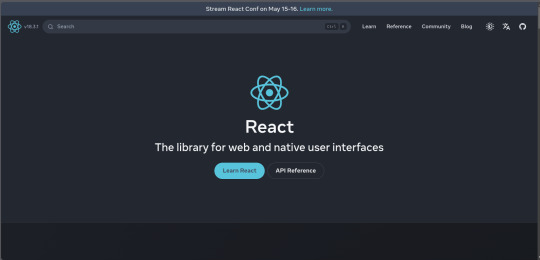
2. Angular
Angular, backed by Google, is a powerful framework for building dynamic single-page applications (SPAs).
Why Choose Angular?
Two-Way Data Binding: Synchronizes data between the model and the view.
Dependency Injection: Improves code maintainability and testability.
Comprehensive Documentation: Extensive resources for learning and troubleshooting.

3. Vue.js
Vue.js has gained popularity due to its gentle learning curve and versatility.
Advantages of Vue.js
Reactive Data Binding: Simplifies state management.
Single-File Components: Encapsulate HTML, CSS, and JavaScript in one file.
Flexibility: Can be used for both large-scale and small-scale applications.

4. Svelte
Svelte is a relatively new player that compiles components into highly efficient vanilla JavaScript at build time.
Svelte’s Standout Features
No Virtual DOM: Directly manipulates the DOM for better performance.
Less Boilerplate: Cleaner code with minimal overhead.
Ease of Use: Intuitive and straightforward syntax.
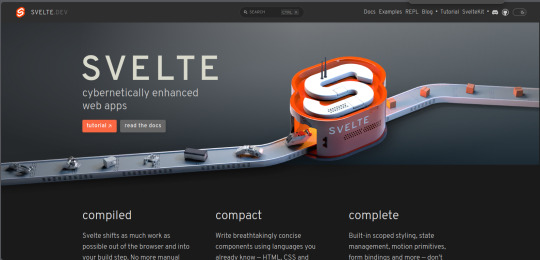
5. Bootstrap
Bootstrap is a front-end framework that provides pre-designed components and a responsive grid system.
Benefits of Using Bootstrap
Responsive Design: Ensures your site looks great on all devices.
Pre-Styled Components: Saves time with ready-to-use UI elements.
Customizable: Easily customize with Sass variables and Bootstrap’s extensive options.
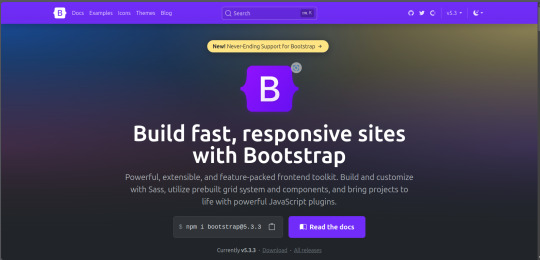
6. Tailwind CSS
Tailwind CSS is a utility-first CSS framework that allows for rapid UI development.
Tailwind CSS Features
Utility-First Approach: Use utility classes directly in your HTML.
Customizable: Extensive configuration options to suit your project’s needs.
Consistency: Enforces a consistent design language across your project.
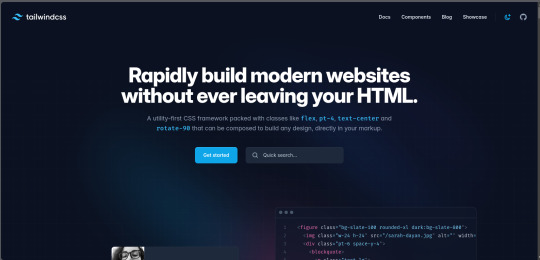
7. Ember.js
Ember.js is a robust framework for building ambitious web applications.
Why Ember.js Stands Out
Convention over Configuration: Reduces the amount of decision-making and boilerplate code.
Strong Routing: Powerful routing capabilities for managing application state.
Productivity: Focuses on developer productivity with built-in best practices.
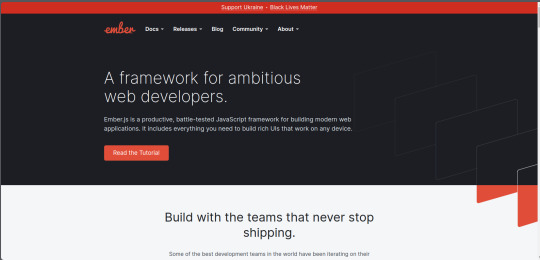
8. Alpine.js
Alpine.js offers a minimal and lightweight way to add interactivity to your websites.
Key Features of Alpine.js
Lightweight: Small footprint with only a few kilobytes.
Declarative Syntax: Similar to Vue.js, making it easy to understand and implement.
Ease of Integration: Can be easily integrated into existing projects.
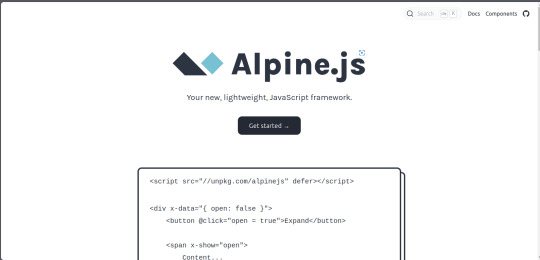
9. Next.js
Next.js is a popular React framework that enables server-side rendering and static site generation.
Benefits of Using Next.js
Server-Side Rendering (SSR): Improves performance and SEO by rendering pages on the server.
Static Site Generation (SSG): Pre-renders pages at build time for fast load times.
API Routes: Allows you to create API endpoints within your application.

10. Lit
Lit is a simple library for building fast, lightweight web components.
Advantages of Lit
Web Components: Embraces the web components standard for reusable, encapsulated HTML elements.
Performance: Lightweight and highly performant.
Simple API: Easy to learn and use with a minimal API surface.

Conclusion
Choosing the right front-end framework or library can significantly impact your workflow and the quality of your projects. Whether you prefer the flexibility of React, the structure of Angular, or the simplicity of Svelte, there's a tool out there to suit your needs.
Final Tips for Selecting a Framework or Library
Project Requirements: Consider the specific needs of your project.
Community and Support: Look for frameworks with strong community support and documentation.
Learning Curve: Choose a tool that matches your current skill level and the time you have available to learn.
By staying informed about the latest tools and trends, you can ensure that your skills remain relevant and that you can deliver the best possible results in your projects. Happy coding!
Remember, the best tool is the one that helps you get the job done efficiently and effectively. So, dive into these frameworks and libraries, and take your front-end development skills to the next level!
Share Your Thoughts
I'm curious to know your thoughts on these front-end frameworks and libraries. Have you used any of them in your projects? Which one is your favorite, and why? Share your experiences and insights in the comments below.👇
2 notes
·
View notes
Text
Juniper Research: Digital Money Transfer Market: Huawei And Visa Revealed As Leaders In New Competitor Leaderboard

Juniper Research's most recent study on digital money transfers and remittances shows a significant increase in transaction value. The study projects a 41% surge over the next four years, reaching $4.5 trillion in 2028. This growth is mainly due to the rise of digital money transfer solutions in developing regions and the rapid adoption of instant payments in developed markets like the EU.
The report, titled "Global Money Transfer & Remittances Market 2024-2028," delves deeper into this trend, highlighting the importance of digital platforms and instant payments. It also introduces the Competitor Leaderboard, ranking the top 15 digital money transfer platforms based on various criteria. Leading vendors for 2024 include Huawei, Visa, Mastercard, Comviva, and PayPal, praised for their innovative solutions.
To stay ahead, vendors need to focus on developing Payment-as-a-Service (PaaS) solutions with robust API offerings for seamless integration into superapps and other services.
Read More - https://www.techdogs.com/tech-news/business-wire/juniper-research-digital-money-transfer-market-huawei-and-visa-revealed-as-leaders-in-new-competitor-leaderboard
2 notes
·
View notes